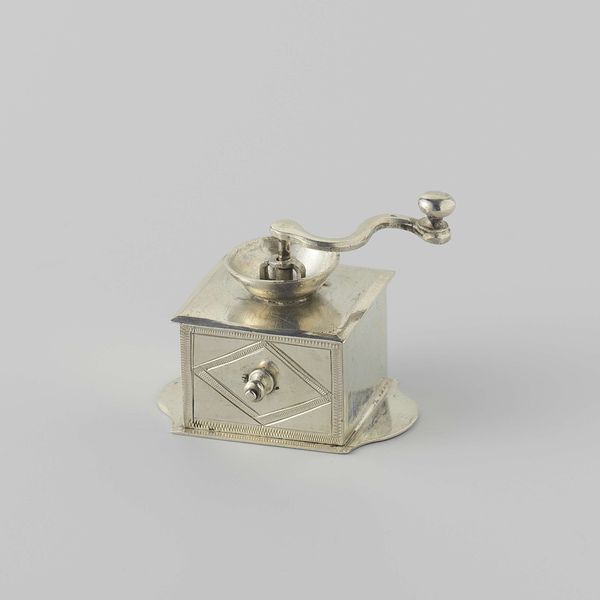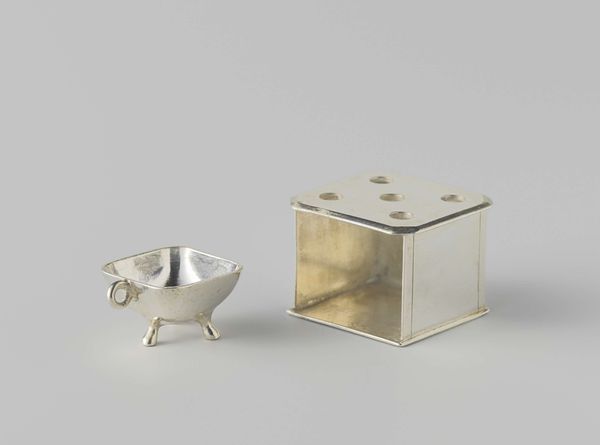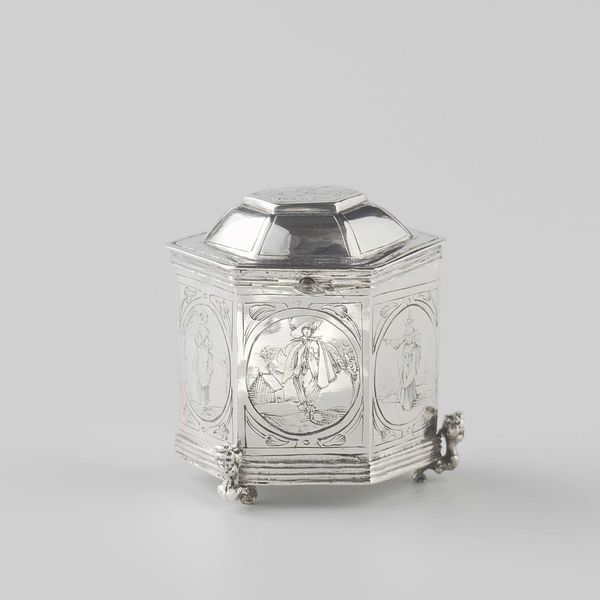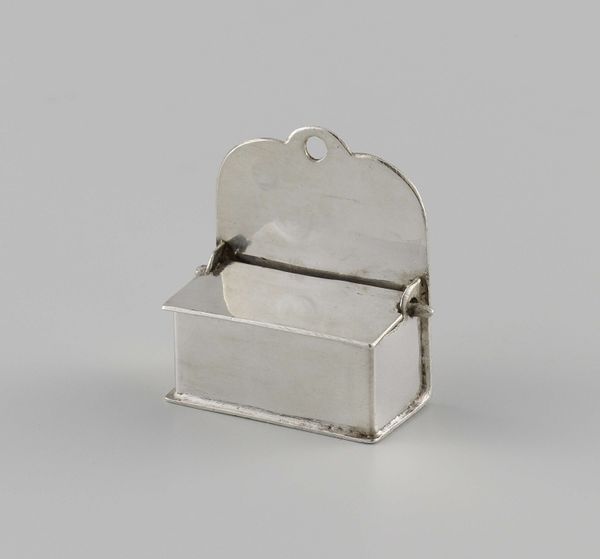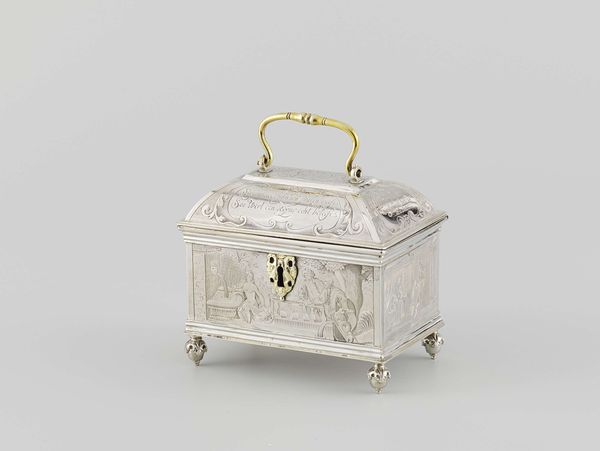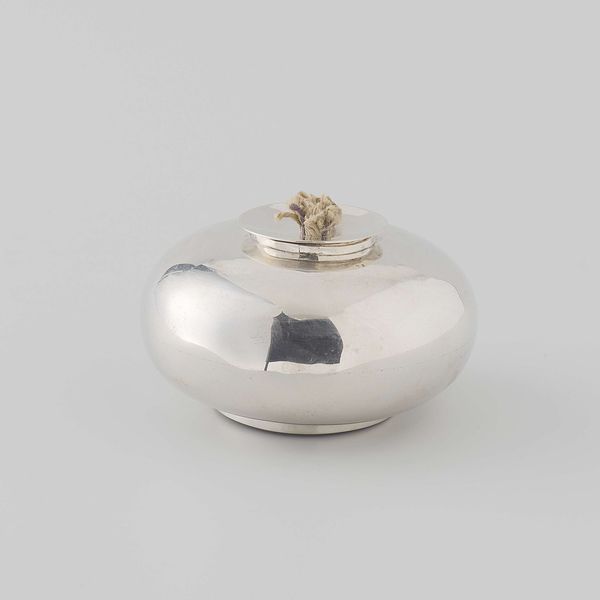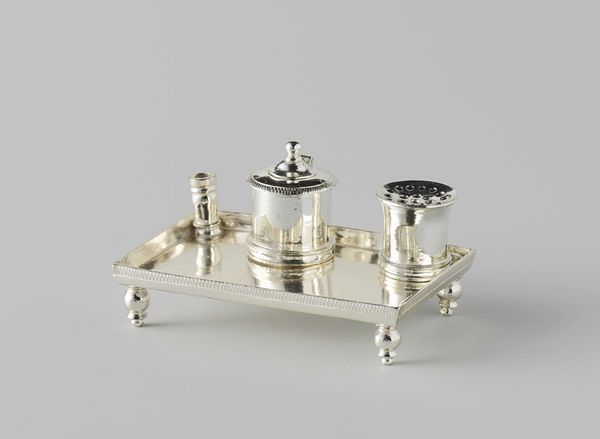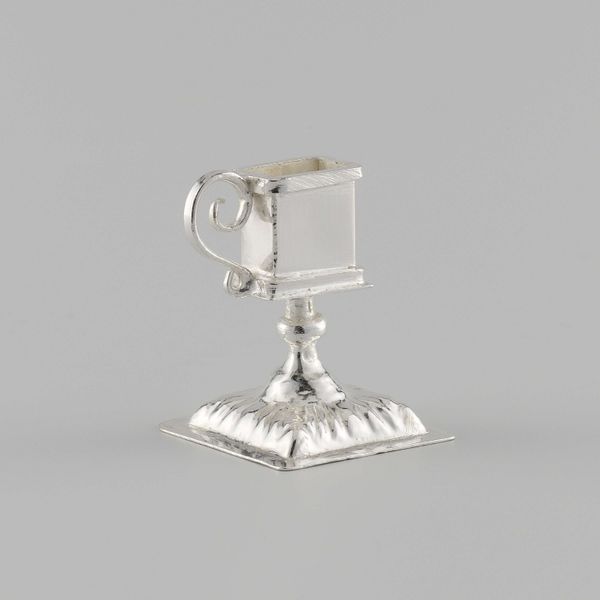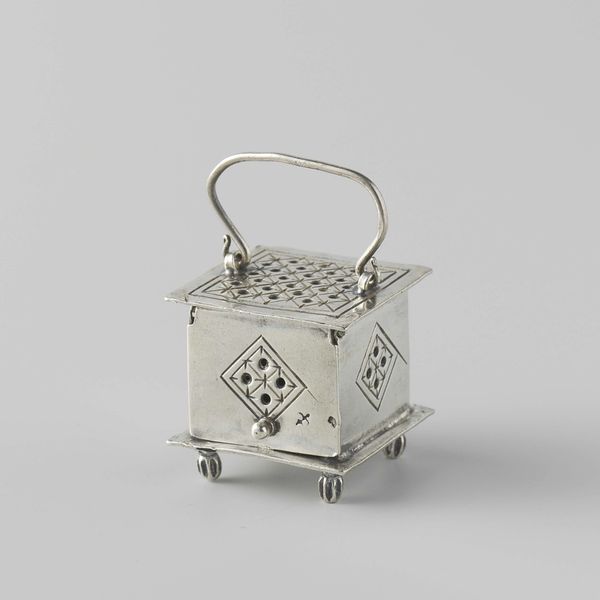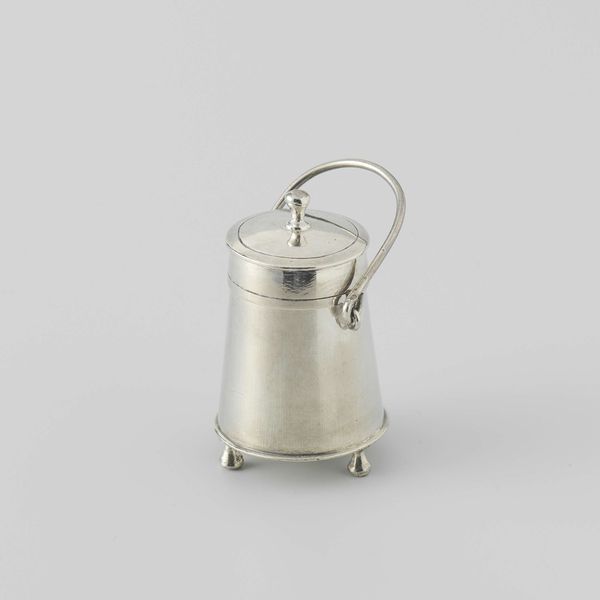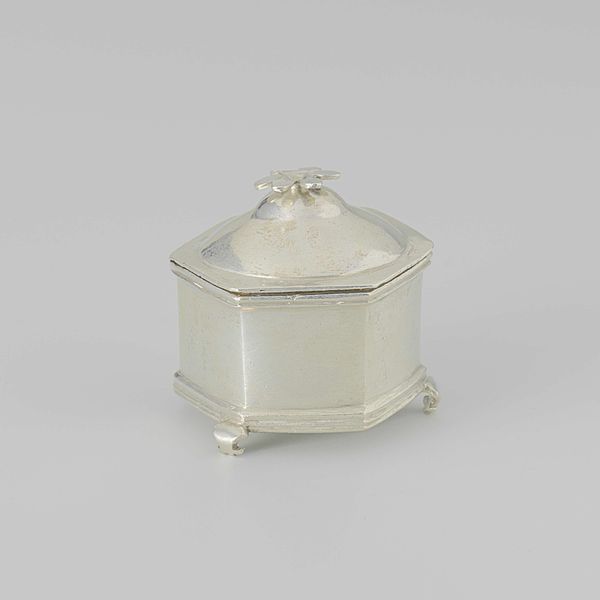
metal
#
baroque
#
metal
#
miniature
Dimensions: length 4.4 cm, width 3.9 cm, height 3.5 cm
Copyright: Rijks Museum: Open Domain
Editor: This exquisite miniature, entitled "Koffiemolen," a coffee grinder by Jan Rooseboom, was crafted around 1730 from metal. It’s unbelievably small and delicate. What is your take on a seemingly functional, utilitarian object being transformed into an art piece? Curator: The scale is certainly striking, isn’t it? Considering its era, such miniatures, particularly those rendered in precious metals, often served as status symbols within burgeoning mercantile societies. Who do you imagine owned and displayed this object? Editor: Someone affluent, surely. The craftsmanship suggests both wealth and perhaps a fascination with domestic rituals. It feels almost like a commentary on the increasing importance of commodities like coffee in daily life. Curator: Precisely. The meticulous recreation of an everyday object as a luxury item forces us to consider the socio-economic shifts of the Baroque period. It highlights the evolving role of objects in representing identity and social standing. Notice how the artist has miniaturized a coffee grinder and amplified its intrinsic meaning in a society quickly forming the habit of taking coffee. How does this blend of function and artistic representation speak to you? Editor: I see how Rooseboom cleverly captured a changing world, but also cemented existing divides! Thank you. Curator: Absolutely. It’s through examining such pieces that we can gain insight into the complex relationship between art, social structures, and the very human desire for distinction. I've definitely gained a fresher view of it too, from our discussion.
Comments
No comments
Be the first to comment and join the conversation on the ultimate creative platform.
